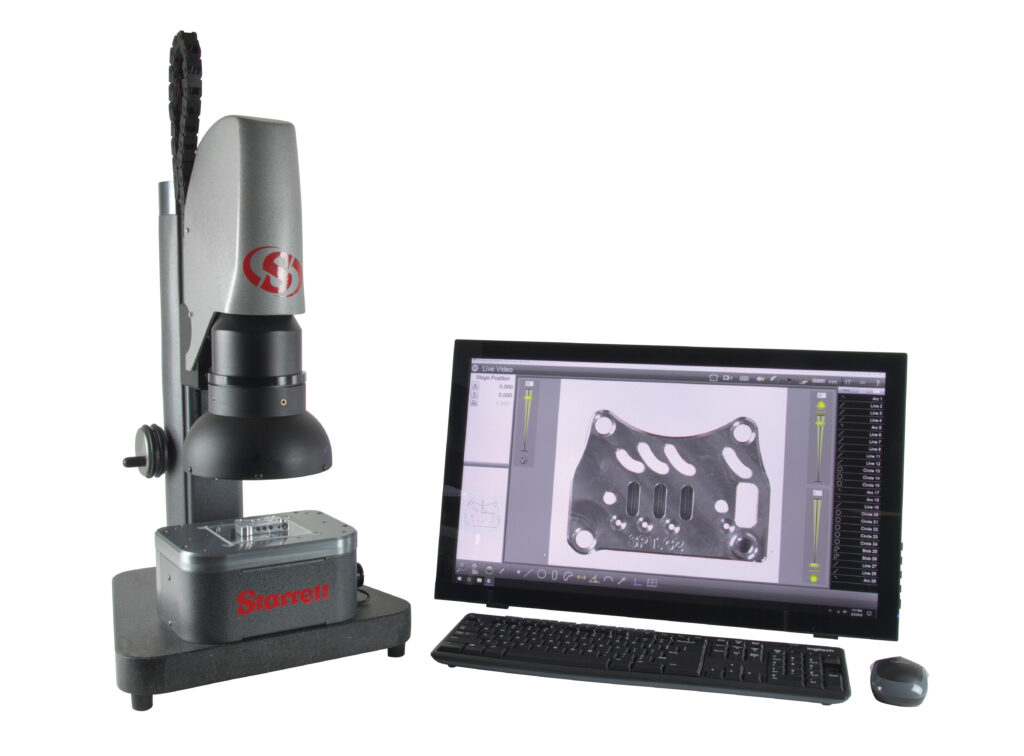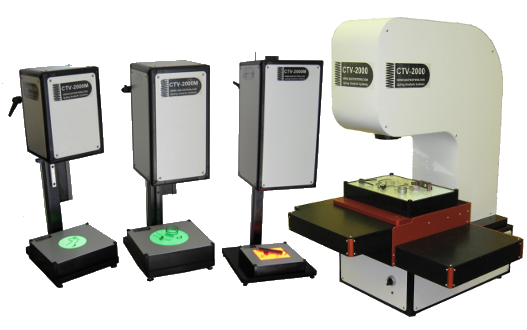Understanding How Optical Dimension Systems Enhance High Quality Control Processes
When you're looking to improve top quality control procedures, comprehending optical dimension systems is important. Let's explore the essential elements that make optical measurement a game-changer in quality management.

The Fundamentals of Optical Measurement Systems
Optical measurement systems play a vital role in ensuring product high quality across different markets. These systems use light-based modern technologies to gather accurate data regarding physical attributes, such as dimensions, surface coating, and color. By using lasers, cams, and sensing units, you can attain non-contact dimensions that reduce the risk of destructive delicate items.
Comprehending the fundamentals of these systems is fundamental for efficient quality assurance. They run on concepts like diffraction, refraction, and reflection, permitting you to evaluate numerous materials and shapes. The accuracy and speed of optical dimensions allow real-time monitoring, which aids you identify flaws early in the production procedure.
Furthermore, these systems can be integrated with software for improved information analysis, producing a comprehensive top quality monitoring strategy. By leveraging optical measurement systems, you not only increase productivity yet also guarantee your items fulfill rigid quality requirements, inevitably enhancing client satisfaction.
Kinds of Optical Dimension Technologies
Numerous sorts of optical measurement modern technologies are available, each created to satisfy specific requirements in high quality control. You may run into laser triangulation, which measures distance by examining the angle of a shown laser beam. This innovation is excellent for capturing accurate measurements in 3D room.
An additional option is structured light, where you forecast a collection of light patterns onto a surface area to develop a detailed 3D model. This method works well for complicated geometries.
After that there's interferometry, which can identify minute adjustments in surface area profiles by examining the interference patterns of light waves. This is specifically valuable for applications calling for nanometer accuracy.
You might additionally take into consideration optical comprehensibility tomography, which provides high-resolution photos of inner attributes without harming the things. Each modern technology offers various requirements, so choosing the best one is necessary for accomplishing highest quality control outcomes.
Secret Benefits of Optical Dimension in Quality Assurance
When it comes to top quality control, leveraging optical dimension modern technologies can greatly boost accuracy and effectiveness. These systems allow you to record in-depth dimensions rapidly, decreasing the moment required for evaluations. You'll notice that optical dimensions can determine even the tiniest flaws that may go unnoticed with typical techniques, ensuring item consistency.
In addition, utilizing optical dimension systems often causes lowered waste and remodel, as you catch problems early in the manufacturing process. You'll additionally value the non-contact nature of many optical approaches, which lessens damages to fragile components during assessment. This flexibility permits a more comprehensive range of applications throughout different materials.
With real-time data collection, you can make educated choices swiftly, improving your high quality guarantee procedures (optical measurement systems). Inevitably, including optical measurement right into your quality assurance approach not only enhances productivity but likewise boosts customer satisfaction by supplying higher-quality items consistently
How Optical Dimension Systems Improve Precision and Precision
Optical dimension systems enhance precision and accuracy by enhancing measurement resolution, allowing you to find even the tiniest variations. With real-time information evaluation, you can make immediate changes and decisions, ensuring your procedures remain on track. This combination not only enhances item high quality but also enhances your high quality control efforts.
Improved Measurement Resolution
By leveraging innovative innovations, optical dimension systems substantially enhance measurement resolution, leading to boosted accuracy and precision in high quality control. You'll see a substantial difference in the clearness of dimensions, permitting you to determine even the tiniest deviations from requirements. Inevitably, boosted dimension resolution not only improves item top quality but also enhances resource application, making sure that you satisfy customer expectations regularly.
Real-Time Data Analysis
Although traditional measurement systems typically rely on postponed information processing, real-time data analysis in optical dimension systems revolutionizes the means you keep track of top quality. You'll experience better precision given that you can promptly contrast dimensions against predefined criteria. In addition, real-time information assists you gather valuable insights over time, tweak your quality control processes.
Integrating Optical Dimension Into Existing Quality Assurance Processes
Incorporating optical measurement into your existing top quality control processes can significantly boost precision and performance. By incorporating optical measurement systems, you can improve his comment is here data collection, decreasing human mistake while increasing the rate of assessments. Begin by recognizing crucial points in your manufacturing line where optical dimensions will supply one of the most worth.
Next, educate your team on the brand-new modern technology, guaranteeing they recognize how to utilize the systems successfully. This training will aid them translate outcomes quickly and properly.
You must likewise develop a procedure for incorporating optical information right into your existing quality monitoring software. This combination enables real-time analytics and reporting, improving decision-making.
On a regular basis assess the information and feedback from your team to recognize any kind of locations for renovation. With these steps, you'll not only improve your quality assurance procedures however also cultivate a culture of continual renovation within your company.
Instance Researches: Effective Application of Optical Measurement Systems
In this area, you'll check out exactly how optical measurement systems have actually changed quality assurance in markets such as aerospace and automotive production - optical measurement systems. You'll see real-world instances of just how these modern technologies boosted precision and effectiveness. These situation research studies highlight the tangible advantages of integrating optical systems right into production processes
Aerospace Market Applications
As the aerospace sector faces boosting needs for accuracy and efficiency, business are transforming to optical measurement systems to boost their quality assurance processes. These systems, like laser scanning and 3D imaging, give exact measurements of components, guaranteeing they satisfy rigorous security requirements. As an example, a leading airplane supplier integrated optical measurement modern technology to check generator blades, reducing inspection time by 50% while boosting precision. Another instance included a satellite manufacturer using optical systems to measure complicated geometries, which decreased mistakes in assembly and significantly decreased rework expenses. By embracing these innovative technologies, you can not only simplify your quality assurance processes yet also enhance product integrity and safety and security, inevitably resulting in better consumer fulfillment and rely on your aerospace items.
Automotive Production Success
Optical measurement systems have actually also made substantial strides in the automotive manufacturing market, where precision is key to lorry efficiency and security. By applying these innovative systems, suppliers like BMW and Ford have significantly enhanced their quality assurance processes. BMW incorporated optical measurement for body assembly, guaranteeing elements fit flawlessly, which lowered rework and enhanced manufacturing efficiency. Ford embraced 3D scanning methods to detect dimensional mistakes in engine parts, resulting in less issues and enhanced dependability. These case research studies demonstrate exactly how optical measurement systems encourage you to achieve tighter tolerances, lessen waste, and elevate overall product quality. Accepting these technologies can lead to significant competitive benefits in today's busy automobile industry.
Future Patterns in Optical Measurement and High Quality Control
While developments in technology continue to reshape the production landscape, the future of optical dimension and quality control looks appealing - optical measurement system. You'll see a significant change in the direction of automation and AI combination, making it possible for systems to examine information in real-time. This suggests quicker decision-making and reduced human error, eventually enhancing product quality
Furthermore, as 3D imaging modern technology boosts, you'll gain from even more precise measurements of intricate geometries, making it simpler to keep tight resistances. The rise of cloud-based solutions will certainly additionally allow you to access information remotely, facilitating collaboration and streamlining procedures.
In addition, sustainability will certainly play a vital role in future advancements. Anticipate optical dimension systems to focus on energy efficiency and waste decrease, lining up with worldwide environmental objectives. By welcoming these patterns, you can ensure your quality assurance processes remain cutting-edge, assisting your company flourish in an increasingly affordable market.
Regularly Asked Questions
What Industries Benefit Many From Optical Measurement Equipments?
You'll find sectors such as manufacturing, aerospace, and vehicle advantage most from optical dimension systems. useful content These sectors count on exact measurements for quality control, making certain items satisfy rigorous requirements and boosting total operational performance.
How Do I Choose the Right Optical Measurement System?
To choose the appropriate optical dimension system, evaluate your details needs, take into consideration the kind of measurements you need, review the system's precision, and assure it fits your budget and operational demands.
What Are Usual Difficulties in Executing Optical Measurement Solutions?
You'll deal with challenges like assimilation with existing systems, ensuring exact calibration, educating team efficiently, and handling costs. Recognizing these difficulties early helps you create methods to overcome them and successfully execute optical dimension systems.

Exist Training Resources Available for Optical Measurement Technologies?
Yes, there're different training resources readily available for optical dimension innovations. You can discover online programs, webinars, and workshops used by industry specialists or organizations. These sources can help you effectively execute and utilize these advanced systems.
Exactly How Do Optical Dimension Systems Contrast to Traditional Measurement Approaches?
Optical measurement systems offer greater precision and speed contrasted to standard techniques. They lower human mistake, enable non-contact measurements, and give real-time information evaluation, making them more effective for various applications in top quality control.
Conclusion

Optical measurement systems improve precision and precision by enhancing measurement resolution, allowing you to spot even the smallest variants.By leveraging innovative technologies, optical measurement systems considerably improve dimension resolution, leading to improved this page accuracy and precision in quality control.Although traditional dimension systems frequently depend on postponed data processing, real-time information analysis in optical dimension systems revolutionizes the method you check quality.As the aerospace industry deals with increasing demands for precision and effectiveness, firms are turning to optical measurement systems to enhance their high quality control procedures. How Do Optical Dimension Systems Compare to Typical Dimension Approaches?